A homestead garden is an excellent way to save money, live off the land, and spend quality family time together. Growing your own vegetables and fruits from scratch not only saves you the cost of buying them at the store, but also gets you in touch with where your food comes from.
Imagine having a garden that produces delicious fruits and veggies every year. You can have fresh produce in your own backyard and know exactly what it has (and hasn’t) been sprayed with.
Learning how to grow food in your backyard garden will teach you to be self sufficient while you produce various crops on your own. Here are ten tips for making it happen!
Table of Contents
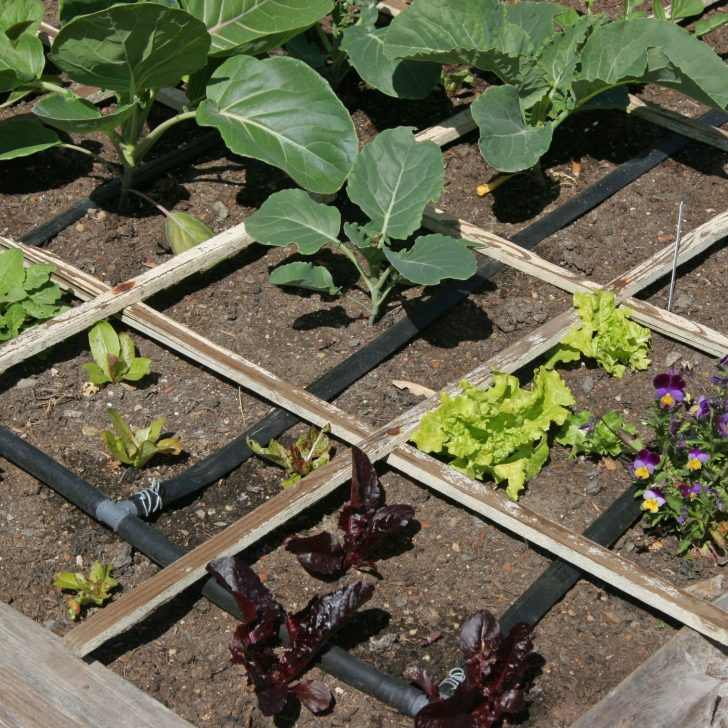
Start small
It’s easy as a new gardener to get excited by all of the potential of a homestead garden. There are so many different things you could grow from herbs and vegetables to fruit trees and grape vines.
It can also be very easy for any gardener to become overwhelmed when they try to take on too much too fast.
There can be a lot to learn when it comes to growing vegetables, especially when you consider just how many different types are available. And for every plant you choose to grow, there are half a dozen pests who want to eat it.
Even the best of gardeners will have bad years, but we don’t want you to be discouraged your first year into this adventure.
Start small with a handful of vegetables that you really like to eat. Learn how to grow them really well. Learn the unique climate and ecosystem of your property.
You can always plant more next year.
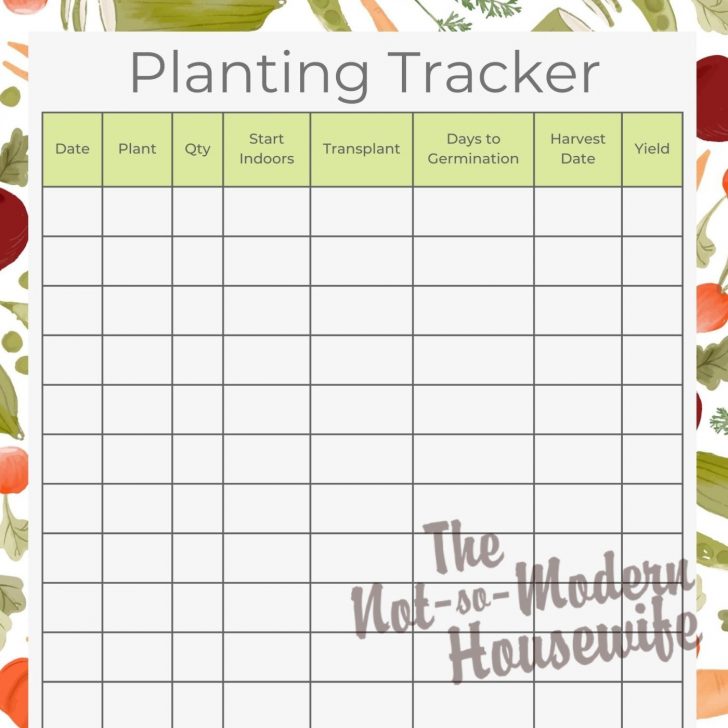
Make a plan for your vegetable garden
Select an area of land and divide it into specific beds for different crops. Write down a garden plan with what you’d like to grow, when you’ll plant, whether you’ll plant in the ground or use raised beds, and how much space each vegetable needs to stay healthy.
How close is your garden to your house and water supply? Make your garden as convenient as possible while still making sure it gets enough light. A garden that is out of sight or inconvenient is easily ignored.
Will you need to fence in your homestead garden? Animals such as dogs, deer, raccoons, rabbits, and armadillos can wreck havoc on a garden, but can often be deterred by a garden fence.
You can also consider dividing the plants by their growing season, spacing them out so that they “rest” without competing with one another.
You will find that some varieties have a very short growing season. You can plan to grow something different in that space after it is harvested, or use succession planting to continue planting additional rows throughout the season for a continuous harvest.
When designing plans for your homestead garden, it is important to prioritize vegetables that you enjoy eating. You will find gardening to be a more enjoyable experience if you like to eat what you grow.
Make notes of how much space each plant requires, the sun and water needs, and length of time until harvest. You will want to group plants together that have similar light and water requirements.
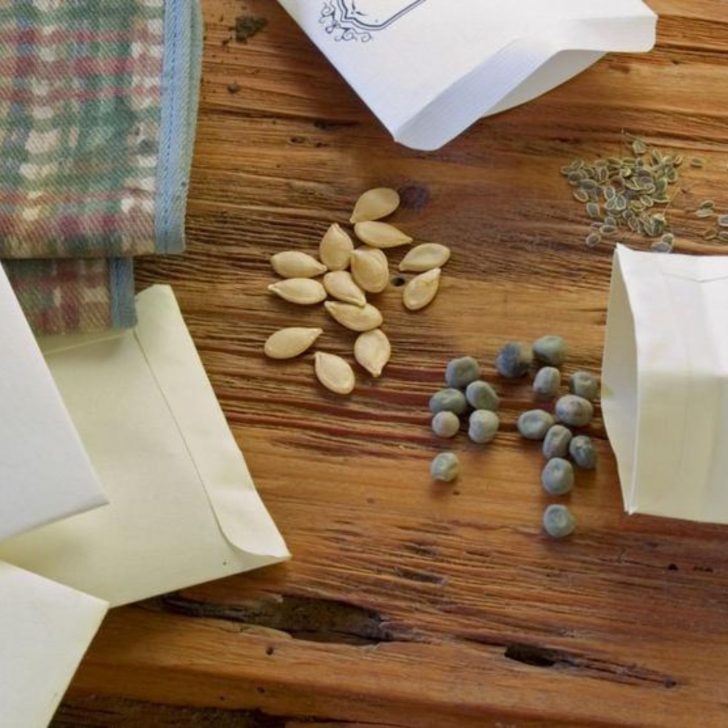
Choose the right seeds and plants for your climate
Selecting the right seeds and plants for your climate will give you the best chance of success. The two main categories of vegetables are cool-season and warm-season.
Cool-season vegetables include asparagus, beets, broccoli, Brussels sprouts, chives, cabbage, carrots, cauliflower, celery, Swiss chard, kale, leeks, dill, lettuce, onions, parsnips, peas, radishes, spinach, turnips, and parsley.
Warm-season vegetables include beans, corn, cucumbers, eggplant, tomatoes, peppers, melons, and squash.
Cool season vegetables love cold weather and actually need cool evening temperatures for good germination. A light frost can even improve their growth and flavor.
They should be started early in the season to ensure they can reach maturity before the temperature gets too hot and causes them to bold. They can also be started in late summer, usually 90 days before your first average frost date, for a fall harvest.
Meanwhile, warm season vegetables have little to no frost tolerance. They need warm evening temperatures in order to germinate and should not be transplanted outdoors until after all change of frost has passed.
Indeterminate varieties should be pruned about 60 days before your average first frost date so they can focus on ripening the fruit they have left.
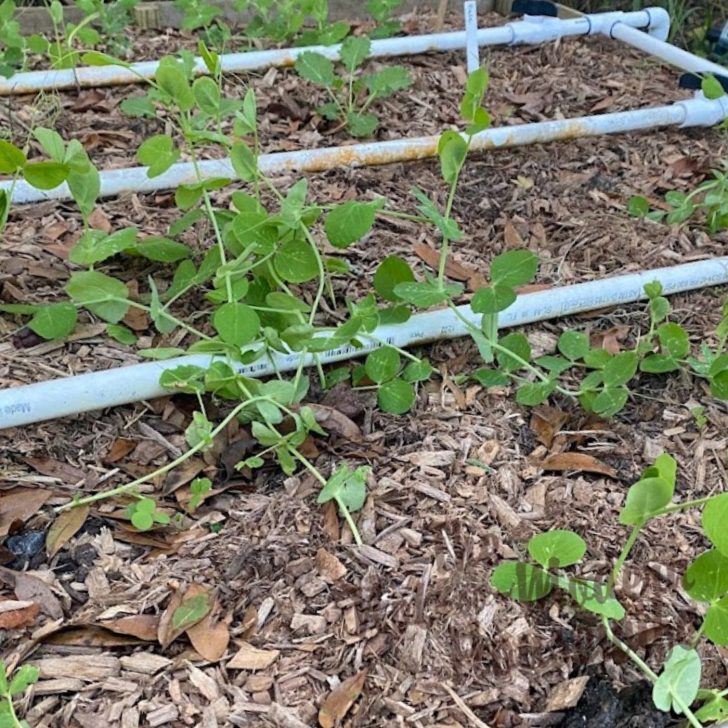
Mulching and irrigation
Provide your home garden with a source of water near by to make watering easy and enable optimum plant growth. You can install a soaker hose that continually runs water or use drip irrigation.
Mulch is a thin layer of material that is spread on the ground to control weeds, cool soil, and retain moisture. It is usually organic, such as straw or wood chips, but can also be artificial such as rubber mulch. Mulching your garden with organic matter will add nutrients as it breaks down naturally in the ground.
You can also use mulch to keep the soil moist and cool, which will prevent weeds from growing.
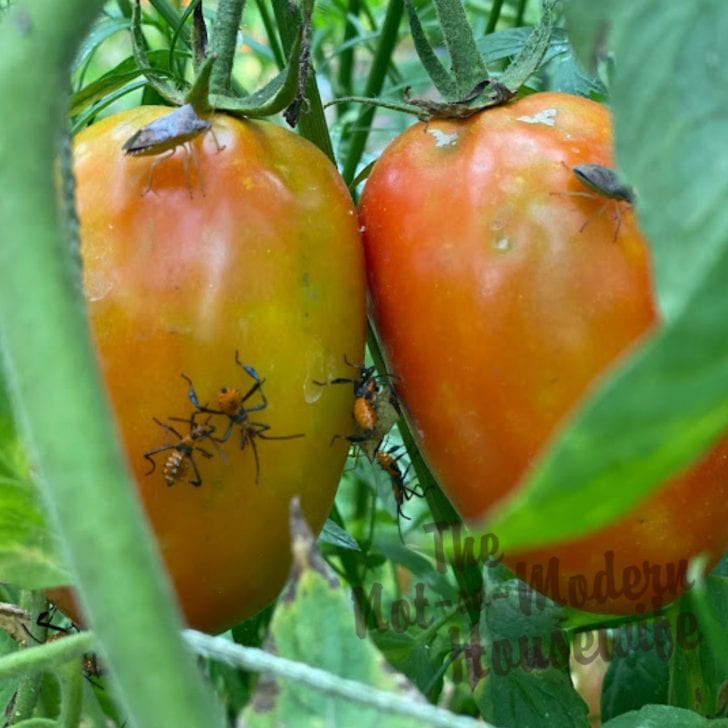
Keep an eye out for garden pests
It is important to know what pests are common for your area so that you can take action before they get out of hand.
The most common pests are caterpillars, bugs, beetles, aphids, and grasshoppers. You will want to avoid using pesticides, but there are some organic solutions if you do encounter problems:
Cold Pressed Neem Oil is made from the neem tree’s seeds and is pressed in a professional cold process to ensure the highest quality end product. The main ingredient in neem oil is azadirachtin.
Azadirachtin is an insecticide that reduces insects’ ability to feed and acts as a general repellent. It also interferes with insect hormone systems, making it harder for them to grow or lay eggs.
Researchers have shown that neem extracts can influence more than 200 species of insects, including many known to be resistant to conventional pesticides. These include sweet potato whitefly, green peach aphid, western flower thrips, diamondback moth and a few leafminers.
It can generally be said that neem products are medium- to broad-spectrum pesticides against vegetation eating insects. They affect most, if not all orders of insects.
Pyrethrins are a mixture of six chemicals found naturally in chrysanthemum flowers. They will kill insects both outdoors and inside your home, including mosquitos, moths, ants, flies and fleas.
Pyrethrins kill insects by contact. They stimulate the nervous system after contact is made, which leads to paralysis and ultimately death. They work best when sprayed directly onto insects.
Spinosad is a natural substance made by soil bacteria that can be toxic to pests. It is used to control an assortment of pests including thrips, leafminers, spider mites, mosquitoes, ants, fruit flies and other insects.
Spinosad affects the nervous system of insects that eat or touch it. When they are poisoned, their muscles will go crazy and they will be paralyzed. This can cause their death, typically within 1-2 days.
Bacillus Thuringiensis (Bt) is a natural occurring, soil-borne bacteria that has been used since the 1950s for natural insect control. It contains a spore which can persist and a protein crystal within the spore which is toxic.
Bacteria that is eaten by certain insects breaks down and releases a toxic crystal. This blocks the system in the insect’s stomach that is supposed to protect it from its own digestive juices. The insect’s digestive system is penetrated, and the insect dies as a result of poisoning from the spores and its own stomach contents.
There are different strains of Bt that can effect specific types of garden pests. Bacillus thuringiensis kurstaki is the mostly widely used by backyard gardeners for the control of caterpillars. There are also types that can control mosquitoes, flies, fungus gnats, and beetles.
Because Bt can effect all types of caterpillars, you should avoid spraying it on butterfly host plants such as passion flower, parsley, dill, carrots, and milkweed.
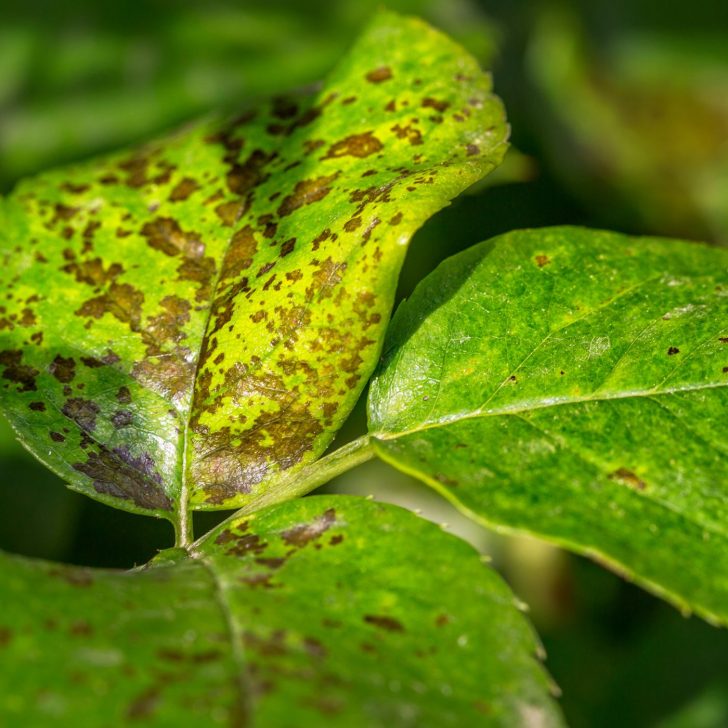
Avoid common plant diseases
There are many diseases that can affect your vegetable garden. You will want to make sure to maintain excellent hygiene when treating diseased plants.
The most common garden diseases are caused by bacteria and fungi.
One of the best ways to reduce the risk of infection is to maintain good sanitation practices. The following are some ways that you can cope with common garden diseases:
Mulch under your plants
Many of the spores that cause disease come from the soil. If you mulch, you can help to prevent soil from splashing onto the lower leaves of your plants.
Mulching will also help you keep your garden soil moist and cool, which will reduce stress for your plants. Plants that are stressed are more vulnerable to disease and pests.
Avoid watering plant leaves
The leaves of your plants are the most susceptible to diseases. When watering, try not to sprinkle water on the top of your plant, where their leaves and stems are.
If you water in the morning, water droplets that remain as the sun rises will act as a magnifying glass and burn the leaves. When watering at night, water droplets left on the leaves as the air cools become a host for fungal spores traveling through the air.
Pinch off poorly colored or deformed leaves
If you discover that you have a problem with fungi or bacteria on plants in your vegetable garden, you should pinch off the flowers and leaves that are infected. This will reduce the chance of spreading the infection to other parts of your garden.
Do not use compost diseased plants
Compost does not always get hot enough to kill all pathogens. If you use compost that has diseased plant material, you risk further infection. To reduce this risk, throw all diseased plant material in the garbage and do not attempt to compost it.
Sanitize your garden tools
There are many diseases that can spread through an infection on a garden tool. To reduce the risk of this, you should clean your tools with hydrogen peroxide or bleach every time you use them on or around diseased plants.
Make sure to rinse them off completely before using them again so as not to cause additional contamination.
Use organic fungicides
There are many different types of fungi and bacteria that can infect your plants. If prevention measures are not keeping diseases controlled in your garden, you should look at organic fungicides to save the day.
There are several organic ways you can control fungal diseases in your garden:
Foliar feeding with worm castings or compost tea are other great ways to provide minerals to your plants. The nutrients will help keep them healthy and also reduce the amount of foliar diseases.
Make the spray by placing a cloth bag with 1 cup of compost or worm castings into a bucket with 1 gallon of water. Place an aquarium bubbler in the bottom of the bucket and mix 2 tablespoons of unsulphured molasses. Turn on the bubbler and let the “tea” brew for 24-36 hours.
The final spray should have a sweet, earthy smell to it. Strain the liquid into a sprayer and use within 4 hours. It can be sprayed directly onto foliage or use as a soil drench.
Baking soda can be used as a fungicide by applying directly to the problem leaves. It can also be applied as part of a spray mixture. You can make the spray at home by dissolving 1 teaspoon of baking soda into one quart of water. This also makes a good spray for preventing powdering mildew on squash and cucumber plants.
Copper fungicide is also an organic option. Apply it to your plants in the early part of the season and then every two weeks afterwards to control fungal diseases like powdery mildew and rust. Fungal spores cannot survive in the presence of copper, but it will stain everything blue. Wear gloves when handling.
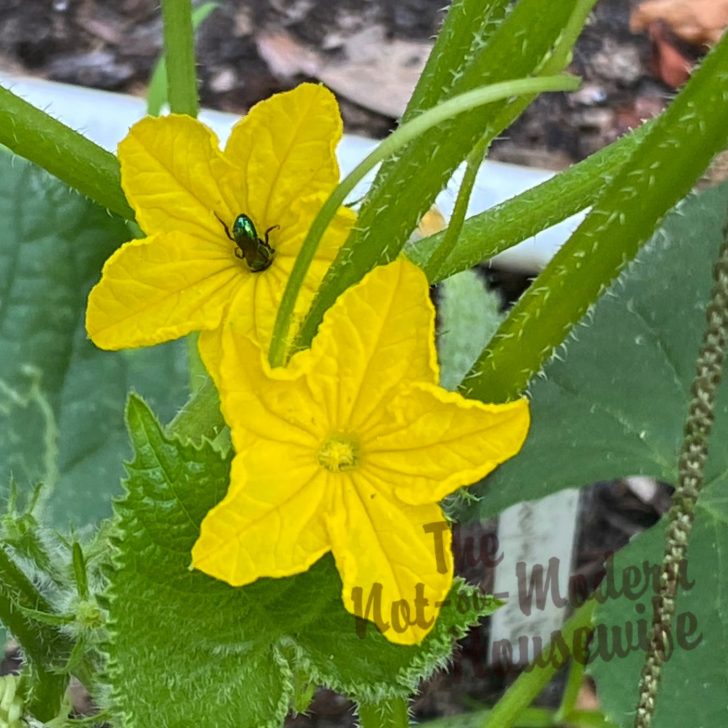
Invite pollinators and other garden friends
Do you want to decrease the amount of work it takes to maintain your garden? Then learn which creatures are there to help you.
There has been a lot of focus in recent years on encouraging and supporting pollinators in our vegetable gardens. The sale of pollinator friendly flower seeds have seen a steady increase are more gardeners rush to plant flowers to feed bees, butterflies, and hummingbirds.
But what other critters do we want in our homestead gardens and how do we invite them in?
Songbirds
Small birds like cardinals and finches will eat many of the pests that plague your vegetable garden. You can invite them to your garden by planting fruit trees and shrubs. Sunflowers, coneflowers, and other large flowers can also be a great attractant for these small birds.
Frogs and toads
Frogs are voracious eaters of mosquitoes, which makes them valuable allies in your battle against insect pests. You can invite frogs to your garden by creating small ponds for them. As well as frogs, toads can also be beneficial by eating slugs and other garden pests.
Snakes
Snakes are often feared by gardeners, but they can also be beneficial to the garden. They feast on mice and other rodents who may feed on your seedlings or root veggies. Some snakes also feed on insects and slugs. Snakes don’t generally need an invitation if there is a food source, but they do prefer areas that offer plenty of hiding places.
Ladybugs
Ladybugs have been a welcome garden visitor for thousands of years. These colorful beetle are voracious eaters of aphids and other small insects that would otherwise treat your plants like a buffet.
You can invite ladybugs in by planting large swathes of dill, fennel, calendula, dandelion, or marigold. They also enjoy a water source and the shelter of groundcover plants like oregano or thyme.
Assassin bugs
These beneficial insects can stay in your garden all year round and will feed on aphids, mites and caterpillars. There are a wide variety of insects that are classified as assassin bugs, so there are a variety of things you can do to attract them to your garden.
Avoid broad spectrum insecticides
Plant small flowering plants in the garden
Provide hiding places such as mulch or groundcover
Install garden lighting for those insects attracted to light
Wasps
Wasps have a bad reputation (because sometimes they can be jerks), but they are actually valuable allies in your garden. They will feast on caterpillars as well as spiders and other smaller insects who might otherwise harm your crops.
They like to have sheltered areas near your garden where they can build their nests, just be careful that they don’t build nests in your workspace. Wasps can be very territorial. Wasps can be deterred from certain areas by hanging a brown paper bag that resembles a hornet nest.
Control weeds in your garden
Weeds compete with your plants for water, nutrients, and space. They will eventually shade out the plants we want to grow.
There are many ways to control weeds in a garden. Pulling them by hand is one of the least efficient ways because they can reemerge from seed that remains in the soil.
Controlling weeds with an organic mulch is another great way to keep them in check. Mulching will prevent weeds from getting sunlight and water, which will help them to die off. Organic mulches such as leaves, straw or even grass clippings can also feed your plants as they break down into the soil.
Solarizing the soil is one of the best way to prevent weeds and is also an easy way give your garden a boost. Lay down heavy black plastic sheets over the soil at least 8 weeks before you plant your garden. Allow the black plastic to heat the soil in direct sunlight. This process kills weed seeds, pathogens that might affect crops plants, and other organisms living in the soil.
Use a stirrup hoe to slice through weed roots. The hoe is tall, so you don’t need to spend the day bent over while removing weeds from the garden. Once the tops of weeds have been severed from their roots, they can easily be raked up and removed with a pitch fork or shovel.
Tilling is another option to remove weeds from a heavily overgrown area. The tiller will greatly disturb the garden area, but it makes it a lot easier to go through afterwards and pick out stubborn weeds.
Planting cover crops between your vegetable rows as well as at the end of the growing season will help to keep weeds from emerging. Many cover crops such as fava beans, perennial peanut, or clover will also help to add nitrogen back into the soil. Chop and drop your cover crops at the end of their growing season for a natural mulch.
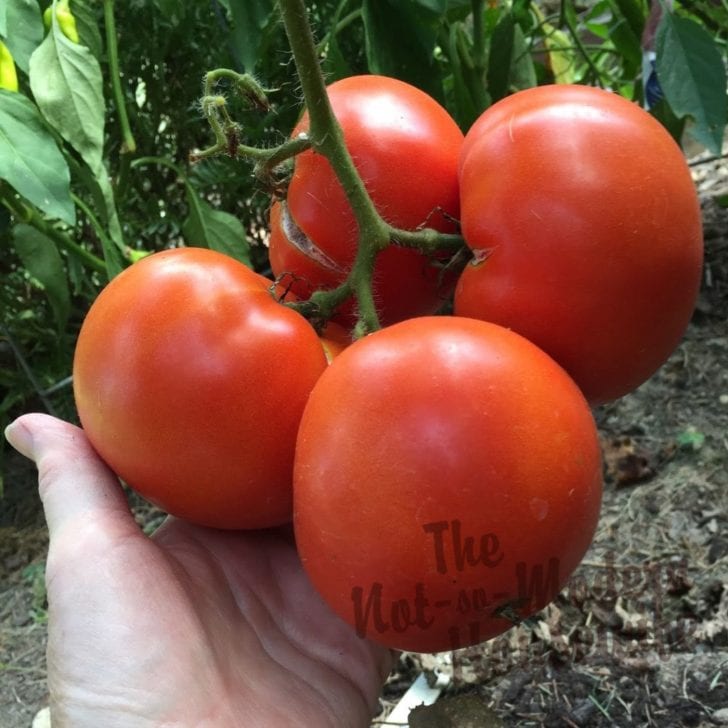
Harvest what you plant so nothing goes to waste
A funny thing happens when gardeners start to grow their own vegetables. The plants become their babies. The fruits become their tiny offspring. And after all of that time and effort, they’re afraid to eat their own veggies.
It’s bizarre, but it’s only natural. You love your plants and don’t want to make them feel bad when you eat one of their brothers or sisters. But the reality is that there are benefits to eating what you grow.
The first benefit is that you’ll be eating healthier than if you bought vegetables at a grocery store. You’ll be putting it straight from the soil to your mouth, skipping all of the transportation and refrigeration that impacts the environment.
The second benefit is you can preserve your veggies so nothing goes to waste. There are so many ways to preserve your harvest such as freezing, dehydrating, and canning. Don’t worry if you can’t eat it all fresh. There will come a time in the season when you are harvesting more than you can eat.
The third benefit is that your garden will be more productive. If you are growing large amounts of veggies, then you’ll need to harvest them often so that they don’t go bad.
Each time you harvest a vegetable, it sends a signal to the rest the plant to produce more food. If you’re harvesting regularly, you’ll have more food. If the fruit is left on the plant too long, it will begin to put its energy into seed production, and it will stop producing new blooms and foliage.
Storing your harvest is a great way to ensure that you’ll have veggies in the winter. As the autumn months approach, it’s time to start thinking about storing food and supplies for the cold season. You can store all sorts of food by canning or freezing them.
There are a lot of benefits for eating what you grow, but one of the best things it does is help you to appreciate the food that you eat. When you work in the garden, weed, cultivate, and harvest your crops, they take on a new meaning for you.
When you take a bite out of that tomato, lettuce, or bean that took weeks to produce, your gratitude for the plants will grow as well. It’s like Christmas morning every time you go outside to harvest some food!
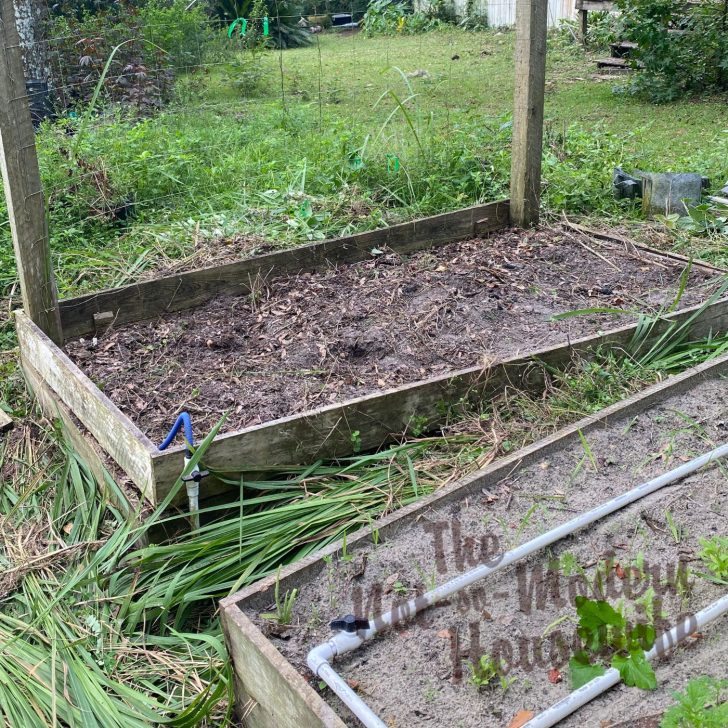
Prepare your garden beds for the next season.
When it’s time to harvest the rest of your veggies and put your garden to rest for the season, it’s important to look to the future.
There are plenty of tasks that you can do to ensure your garden bed will be ready to go for the next year:
Collect seeds from this season’s crops. Use a pair of scissors or your hands to collect seeds and store them in dry envelopes indoors until it’s time for seeding next year.
Leave stems and root balls from your plantings this season and allow them to feed the soil for next season.
Cover the garden beds with compost to feed the soil. Collect any old manure, straw, or leaves from your yard and add them to your garden beds.
Sow new cover crops into the garden bed to protect the soil from erosion or wind during winter months.
Final Thoughts
In the end, growing a homestead garden is an excellent way to save money while providing yourself with nutritious food. You can make the most out of your abilities by learning how to grow various crops on a small scale before expanding to a larger garden.
By following these tips and tricks you will be well on your way towards success. If all this sounds difficult or if there are other questions that you need answered, join our Facebook group to connect with other gardeners who can help.
